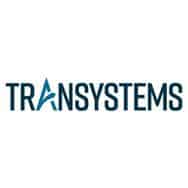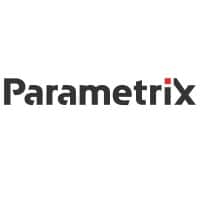One could argue that some skepticism is necessary for engineers to do quality work and protect the safety and welfare of the public, especially when it comes to implementing new practices. As artificial intelligence (AI) continues emerging as a powerful tool throughout the Architecture, Engineering, and Construction (AEC) industry, we may naturally hesitate to adopt and trust AI tools and results. After all, no one knows how AI will develop in the long-term future, although it may not need to be treated much differently than current (non-AI) software tools. We shouldn’t let healthy skepticism prevent us from utilizing AI in low-risk applications and developing trust in higher-risk applications. As with any tool we use, design professionals need to accept responsibility for reviewing and validating results. This article discusses ways we can start to build trust with AI solutions in various functions.
Creative Content Generation
The first frontier of AI use in the AEC industry has been on the creative front, particularly in generating content — both text and images — for social media and proposals. As this side of the industry develops further, our focus shifts to trusting that the content being generated is useful, accurate, and unique (i.e., not plagiarized). Luckily, most AI-generated creative content is relatively easy to review or at least similar to traditional review practices. Users can readily identify if the product fits their needs or not. When it comes to generating creative content with AI, consider the following:
- Use AI for inspiration and not as a “plug-and-chug” process.
- Spur progress by using AI for overcoming writer’s block, providing key points, review for grammar, and rewriting for tone or complexity.
- Research and deploy creative content AI tools that only use artists’ content if they “opt-in.”
- Review all AI-created content thoroughly before publishing anything with your name (and reputation) attached.
Data Collection, Document Development, and Resource Planning
Other than creative content generation, there are other low-risk uses of AI available. These applications may take more effort to implement, but review processes are typically less involved and similar to traditional practices. AI shines in data-heavy environments, so view data as an asset and review where your firm has the most accessible and useful data to develop solutions around. Before using any AI tool, research the developer’s policies on protecting and using your data — never put sensitive/confidential information about yourself or clients into open-source AI tools. AI tools have helped a number of firms with tasks like:
- Repetitive, tedious, and/or manual data entry work.
- Sorting and organizing field pictures.
- Analyzing past project data to evaluate performance, “go/no-go” on future projects, scheduling, and resource planning.
Decision-Making in Design
As engineers, we use several traditional (i.e., non-AI) software applications to assist in design work. Some programs readily demonstrate how they function, generating detailed calculations, reports, and graphics that we can use to verify the accuracy of the program’s functions. On the other hand, some programs are more “black box” in nature, providing the engineer with a result but little to no explanation of the program’s processes. In either case, the functionality of the traditional software does not change without an update.
In comparison, AI tools are constantly evolving and tweaking their processes. AI tools are almost universally “black box,” which can complicate the design review process. Reviewing results may be very different than we are used to because traditional and AI software applications function differently on a fundamental level:
- Traditional software: User inputs criteria and the software uses prescribed methods to determine an expected Expected solutions make deviations easier to catch.
- Artificial intelligence: AI tools evaluate the user prompt and predict the best possible solution from the data available to the AI tool. Even if the AI tool’s data includes design standards and codes, the AI tool may still take liberties in deviating from design standards and code.
With that in mind, a design process with AI tools should add some review steps like:
- Seek out assumptions made by the AI tool.
- Utilize AI tools for the preliminary evaluation of design options and use a more traditional design method to verify the final design.
- Focus on using AI tools with solutions that have “explainability.”
- Watch for bias. Based on the data being sourced, some AI tools erroneously favor some solutions over others.
- Be prepared to justify design solutions to clients or colleagues who may be skeptical about AI.
As design professionals, we can use AI to become much more efficient and provide better solutions without sacrificing quality. Artificial intelligence will inevitably continue to mature into a revolutionizing tool for the AEC industry, and finding ways to evaluate and trust results will only become more complex in the future. Recognizing these tools for their capabilities and limitations today, however, gives us an excellent foothold for that future.
About the Author, Tevis Holzer, P.E.

We would love to hear any questions you might have or stories you might share about building trust between AI & AEC.
Please leave your comments, feedback or questions in the section below.














